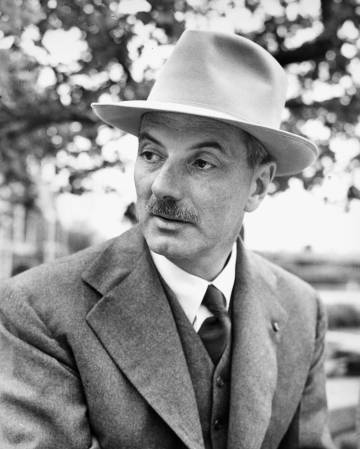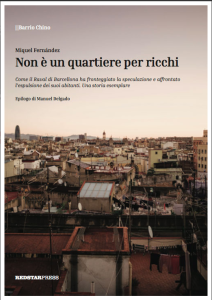28 January 1990
The New York Times

Lewis Mumford, a philosopher, literary critic, historian, city planner, cultural and political commentator, essayist and perspicacious writer on the subject of architecture, died on Friday at his home in Amenia, N.Y. He was 94 years old.
Lewis Mumford, a philosopher, literary critic, historian, city planner, cultural and political commentator, essayist and perspicacious writer on the subject of architecture, died on Friday at his home in Amenia, N.Y. He was 94 years old.
Mr. Mumford‘s grandson, James Morss, said Mr. Mumford had been frail. In a February 1989 interview Mr. Mumford‘s wife, Sophia, said that her husband’s mind was slipping and that he could no longer write. Even so, she said, ”he still has his essential characteristics.” He died in his sleep Friday afternoon. In addition to his writing pursuits, Mr. Mumford actively fought the development of large-scale public works that he considered poorly planned, and was an adamant foe of Robert Moses’s development of vast expressways.
Mr. Mumford‘s lifetime contributions to American culture were recognized in July 1986 when he was awarded the National Medal of Arts by President Reagan.
”If I have any field of specialization at all, it is the all-inclusive one of the social philosopher,” Mr. Mumford once said. It was an apt description, for there was scarcely any aspect of modern society that he left unexamined. Science, technology, urban living, city planning, education, politics, literature, militarism – all these subjects and more Mr. Mumford expounded in a long life of teaching, lecturing and writing here and abroad.
Ada Louise Huxtable, a former architecture critic and member of the editorial board of The New York Times, recently called Mr. Mumford ”a scholar of cosmic cultural reach and conspicuous public conscience, a distinguished critic of life, arts and letters, an unequaled observer of cities and civilizations.”
Emphasizing that his writing was highly personal and without pretense as objective scholarship, Ms. Huxtable noted that ”the values Mr. Mumford espoused, the foundation of his reputation as one of the most original minds and influential writers of our time, simply no longer exist.” In a critical review of the Lewis Mumford biography, ”Lewis Mumford: A Life,” (Weidenseld & Nicolson, 1989) she concludes: ”What he never learned was that society did not share his view of the good life of simplicity, self-sufficiency and community; an attachment to abstinence, higher ideals and the greater good are not the basic American dream.”
Feared the ‘Megamachine’
Part scholar, part prophet, part poet, Mr. Mumford saw Western – and American – civilization as increasingly dominated by a machine technocracy and mentality that oppressed and dehumanized all within its reach. The megamachine, as he termed it, engendered a bogus existence – material, intellectual and spiritual – that reduced human endeavor to a series of ciphers.
In his perspective, the megamachine was opening the gates to catastrophe, should man succumb to the myths surrounding it and worship its emanations.
Because Mr. Mumford tended to be a moralist in the tradition of Emerson and Whitman, he was accused of seeing science as evil and machinery as the Devil’s handiwork. But in an interview some years ago he took pains to insist that he was no neo-Luddite who would destroy machinery in the hope of bringing back a pre-industrial society.
”It is not the apparatus of the machine that’s wrong, but the organized cult of machinery that is really evil,” he said. ”It is a monster that can transform man into a passive, purposeless animal. It can run away with him.”
Science without conscience, he said, quoting Rabelais, ”is the ruin of the soul.”
Rather than permit ”megatechnics” to take over, Mr. Mumford wanted them brought under rational control, and humanized.
Mr. Mumford said he feared that ”a dominant minority” – those who had mastered science and technology and wielded power as a result – could eventually create a ”uniform, all-enveloping superplanetary structure, designed for automatic operation.” In these circumstances, man will ”have not only conquered nature, but detached himself as far as possible from organic habitat.”
To counter this possibility Mr. Mumford advocated both a de-emphasis of reliance on technology and a large degree of urban planning. He was one of the first modern city planners, and made his early reputation in this field.
He foresaw the effects of the highway on Manhattan 20 years before these were generally recognized, saying in 1943:
”The New York express highways would be admirable if they were related to anything except the desire, on the part of the more prosperous, to get out of New York as fast as possible; actually, their function is to increase the planless decentralization of the metropolis and thereby pile up such a load of decaying properties in the center as to hasten the final exodus.”
Wrote of the Cityscape
Mr. Mumford wrote about the cityscape of New York and other cities around the world for many publications, but he was most famous for his ”Sky Line” column in the New Yorker. From the 1930’s to the 1950’s, he reviewed skyscrapers, housing projects and urban renewal plans. He was an early opponent of congestion and overbuilding in Manhattan, and wrote in 1955 that midtown had become so dense that architecture would soon cease to matter.
Brendan Gill, who revived Mr. Mumford‘s ”Sky Line” at The New Yorker three years ago, said yesterday: ”He struck me as an authentically noble man because of his unselfish determination to better the condition of life for the rest of us, far beyond the limits of architecture.” Mr. Gill has been asked to deliver the first of the Lewis Mumford lectures at the New School of Social Research in February.
For his prescience as well as for his analysis of the ills of Western society, Mr. Mumford had many admirers. ”He is the writer of fresh possibilities, of green fields and blue skies, of the clarion call to halt the current madness and pull the world out of the fire,” wrote Joseph Epstein, the social critic.
Some other readers of Mr. Mumford‘s more than 30 books were less enthusiastic. Jonathan Raban, an English writer, said he believed the philosopher had rejiggered history to suit his purposes. ”Scientists, philosophers and engineers whiz by as if they had only lived to fill a paragraph or a page in Mumford‘s tragedy,” he said. ”Their writings are trimmed and shaped, and they find themselves, like guests being hustled across a drawing room floor, in the strangest company.”
The philosopher believed his critics did not assess properly the evidence under their noses. ”The most conspicuous, scientific and technological achievements of our age – nuclear bombs, rockets, computers – are all direct products of war,” he countered, ”and serve military and political ends that would shrivel under rational examination and candid moral appraisal.”
”The old-fashioned megamachine (made up of harnessed thousands, building the pyramids) was based on punishment,” he said. ”Now the great improvement is that you control people by persuasion, by giving them a standard of consumption that no people has ever had before. Then, if they’re discontented, if their life seems a little hollow, you give them drugs and pornography.”
Roots in the 19th Century
Mr. Mumford‘s principal intellectual and moral roots were in 19th-century America – Emerson, Melville, Thoreau and Whitman – and in Sir Patrick Geddes, the Scottish turn-of-the-century polymath and town planner. These self-help self-realization thinkers all emphasized the virtues of humanism.
The notions of self-transcendence and self-reliance expounded by Emerson and Whitman were exemplified by Mr. Mumford, who, at various times in his life, was a playwright, novelist, historian, educator, planner, radio technician and magazine writer.
He was a tall good-looking man, with deep-set eyes and a brush mustache. He tended to be a tense person whose work ethic required strict devotion.
Years ago, he and his wife cut down on their social life, and his work in his later years was rarely interrupted for pure play. When he broke away for an hour to drink coffee or to work in the vegetable patch near his home, the 60 minutes were planned to relieve accumulated tension and to reinvigorate him for more work.
The illegitimate son of a businessman, and raised by his mother, who was housekeeper in the home of a relative, Lewis Mumford was born in Flushing, Queens, on Oct. 19, 1895. The family shortly moved to the West Side of Manhattan. ”I started public school in 1901, and I was an excellent pupil in the futile academic sense until I entered Stuyvesant High School, where my interests widened and my marks worsened,” he recalled. Experimenting with radio, he expected to become an electrical engineer, but dreams of writing deterred him.
After high school, he spent five years at evening sessions at City College. Although Mr. Mumford accumulated the credits for a bachelor’s degree, illness prevented him from completing college. Instead, he took graduate courses at Columbia and at the New School.
After World War I, in which Mr. Mumford became a naval radio technician 2d class, he was an associate editor of Dial magazine for a year. His essays on housing and urban matters had attracted attention, and he spent part of a year in London as acting editor of The Sociological Review.
Returning, he met Van Wyck Brooks (a volume of their letters was published in 1970); contributed to ”Civilization in the United States,” a seminal American studies book; published ”The Story of Utopias,” his first book, and wrote freelance for magazines like The New Republic and The American Mercury. These activities led to his teaching a course on American architecture at the New School, perhaps the first class of its kind, as was a later course at Columbia on the machine age.
Lived What He Taught
In 1923 Mr. Mumford became a co-founder of the Regional Planning Association of America. Then he served on the staff of the New York Housing and Regional Planning Commission, and edited, in 1925, the regional planning edition of Survey Graphic.
He lived what he taught, moving that year to Sunnyside Gardens, a utopian housing complex in Queens where homes were grouped closely together to provide large common central gardens. It was the first experimental community sponsored by the Regional Planning Association. Mr. Mumford and his family lived there for 11 years.
In the early 30’s he began to write a weekly art column for The New Yorker (for $75 an article) and his monthly city architectural critique for the magazine ($65 an article). This was the backbone of his income for a decade. At the same time he published the first of four volumes in what became known as the ”Renewal of Life” series. It was ”Technics and Civilization” that challenged the belief that the Industrial Revolution began with the steam engine and argued that medieval technology was less backward than was popularly supposed.
The other books in the series were ”The Culture of Cities,” ”The Condition of Man” and ”The Conduct of Life.” The last was issued in 1951, 17 years after the first, and the four volumes established Mr. Mumford as an innovative thinker of the first rank. The books also brought him into academic life as a visiting professor at institutions like Dartmouth, Stanford and the University of Pennsylvania.
”The Culture of Cities,” published in 1938, traced the history of cities in the modern world and set forth proposals for their improvement. It made the author’s international reputation and put him on the cover of Time magazine. But the book was a slow seller, perhaps because urban dwellers then were less occupied with problems of decay.
After publication of ”The Conduct of Life,” which expounds his humanist philosophy, Mr. Mumford returned to a consideration of urban problems, which resulted in 1961 in ”The City in History,” his humanistic compounding of his philosophy, criticism and polemical augury.
Geoffrey Brunn, in his review, found that the book contained ”three Mumfords who succeed one another on the rostrum.”
The ‘3 Mumfords’
”Of these triple personalities,” he continued, ”the most sober and consistent is Mumford the historian. But there is a second Mumford, less rational and more passionate, who is inflamed with the ire and forebodings of an Old Testament prophet. The third person of the complex trinity that is Mumford is the artist and architect of words, a romantic poet in modern dress, a prose Shelley.”
From urban matters, the philosopher turned his gaze to what he saw as the central myth of our times, the myth of the machine. This was the overall title for his two-volume elucidation of modern civilization. ”Technics and Human Development” was the first book, in 1967, and it was followed by ”The Pentagon of Power” four years later.
Both are directed to a single end, Mr. Mumford said, ”that of supplying sufficient historic insight into the causes of the technological crisis of modern civilization, and into the human aberrations that have led to the miscarriages that took place during the last half-century, and are now taking place with demonic compulsiveness.”
Mr. Mumford lived simply in an old country house in Amenia. Its insides were crammed with books, and his study was spartan and functional: a desk, a typewriter, a strong light, a ream of yellow paper.
He was convinced that man’s only hope lay in a return to human feelings and sensitivities and to the moral values of an earlier age.
”The test of maturity, for nations as well as individuals, is not the increase in power,” he remarked toward the close of his life, ”but the increase of self-understanding, self-control, self-direction and self-transcendance. For in a mature society, man himself, and not his machines or his organizations, is the chief work of art.”
His grandson, Mr. Morss, said Mr. Mumford, who in the last three years used a walker, spent his days with his wife.
In addition to her, survivors are his daughter, Alison Mumford Morss, of Amenia, and two grandchildren, James, of New York City, and Elizabeth, of Troy, N.Y.
There will be no funeral. A memorial service will be announced.
Photo: Lewis Mumford in 1970 with the leterary critic Van Wyck Brooks.


